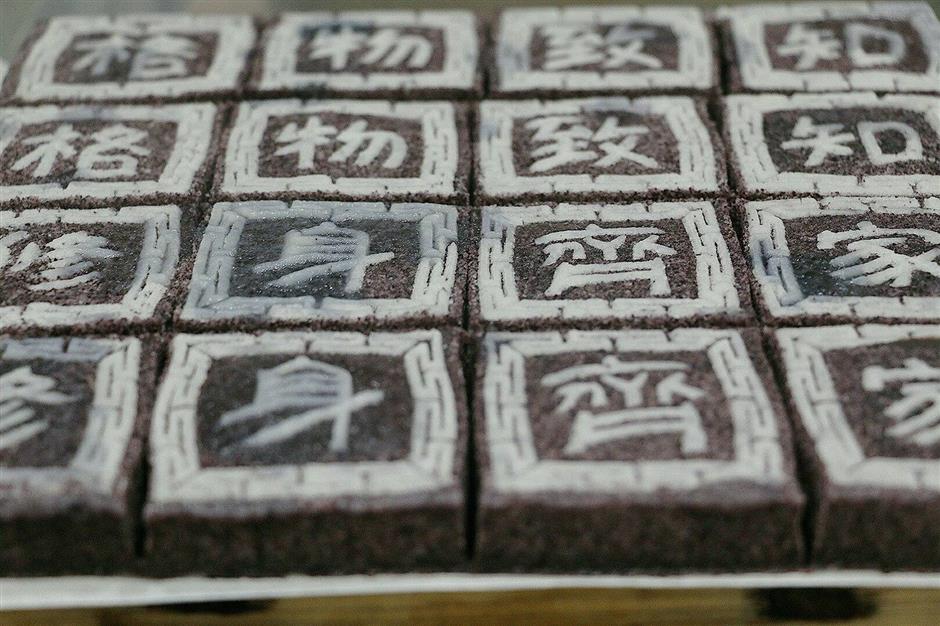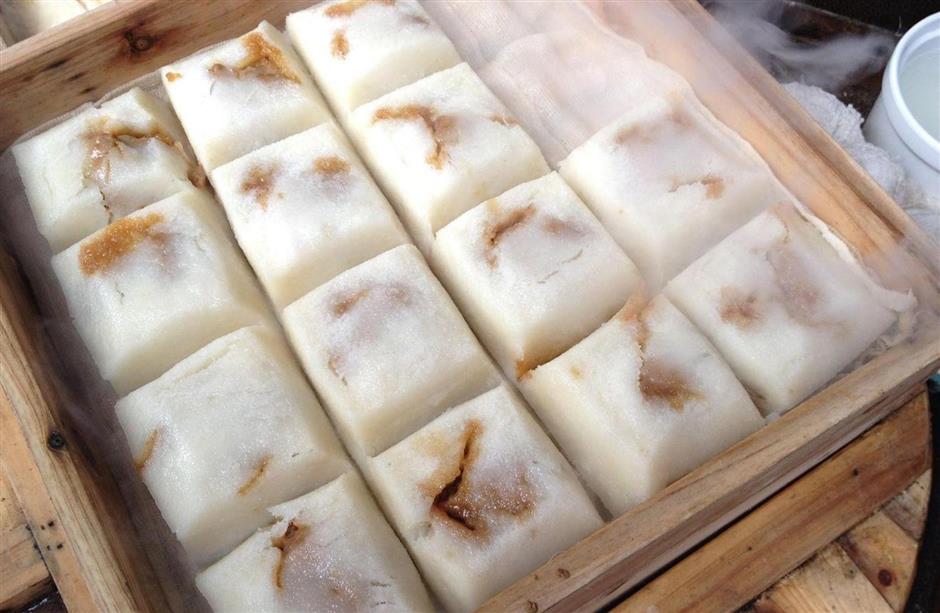Pastry treasures worth hitting the road for the snack
Zhejiang locals cannot live without traditional pastries and dim sum, especially during festival feasts and ceremonial banquets. Bean crunch candy, walnut slices, sesame cake — also known as “starvation cake” — and loquat candy are always among the best-selling products.
Some hidden gems in alleys tempt fans into spending hours on a bus to come buy some. Their goodies enjoy a reputation that even upscale restaurants can’t match.
Some of the stores have earned the official designation of “time-honored,” such as Lao Dao Pastry in Yuhang District, and some have evolved into noteworthy chain brands, like Jiu Zhi Zhai in downtown Hangzhou.
Traditional ways of cooking snacks and confectionery include baking, steaming and deep-frying. Some traditionalists stick to old-style stoves instead of modern ovens.
Shanghai Daily has tasted some of the best Zhejiang pastries and snacks, all easily found online or in malls or local shops.

Sole cake
Sole cake 鞋底饼
Resembling a sole, this dim sum comes from eastern Zhejiang Province and may date back to the Qing Dynasty (1644-1911) and the people of Fenghua District.
But they faded in popularity for a long time and vendors disappeared. But some craftsmen kept the tradition alive and trained apprentices. Sole cakes are now widely available in supermarkets and online shopping platforms including Taobao and Tmall.
Oven-fresh sole cake tastes of umami. The dough is mixed with lard and stuffed with minced shallots. Sugar is often added, along with a sprinkle of sesame.
To make the cake flakier, chefs often coat a layer of egg on the dough before baking. Oil sometimes substitutes for lard.

Moulding pudding
Moulding pudding 印糕
This traditional Ningbo-style pastry is always imprinted with characters, hence its name. Traditionally, it was taken as dry food for traveling because it’s easy to preserve.
In eastern Zhejiang, it often appears in wedding and birthday ceremonies. Auspicious characters like “福” (good luck) and “喜” (happiness) and patterns including cloudy motifs and peony flowers are moulded onto the surface to add a happy vibe to special events.
The wooden mould is often 5 centimeters thick and 28 centimeters long. Dough is stuffed through three to five patterned holes. Traditionally, the first batch of steamed moulding pudding should be offered to the gods and ancestors at temple or in an ancestral hall. They are never sold in markets — that would be inauspicious.
Where to eat:
? Da Xing Gao Tuan
Address: 98 Yan’an Rd
Tel: 1587-7616-003

Tea cake
Tea cake 茶糕
Actually, it has nothing to do with tea. As a famous snack in northern Zhejiang Province, it has found favor with people in Huzhou, Jiaxing and Hangzhou.
Xinshi Town in Huzhou is regarded as having the best. And the setting is antique buildings and criss-crossing watercourses.
This dim sum originated in the Southern Song Dynasty (1127-1279) and was listed as a specialty of Xinshi in the Qing Dynasty.
Its heyday was during the Republic of China (1912-1949) when the town was dotted with stores selling this product. It was popular in roadside stalls and many officially designated time-honored brands date from this period.
Tea cake is made of glutinous rice flour. Instead of using machines, locals prefer traditional millstones.
Rolling dough is the key step to give the dough an al dente mouth feel. It takes skill to add the right amount of moisture. Steaming normally involves lotus or bamboo leaves to enhance the flavor.
The traditional filling is mixed minced pork, bamboo shoots, pigskin, chives and soy sauce. Depending on the season, bamboo shoots can be replaced by other vegetables.
Tea cakes are normally square and translucent. They are best fresh off the steaming rack and are a must-eat treat for those traveling through Xinshi Town.
Where to eat:
? Zhi Wei Guan
Address: 10-12 Yanggong Causeway
Tel: (0571) 8797-0568
















